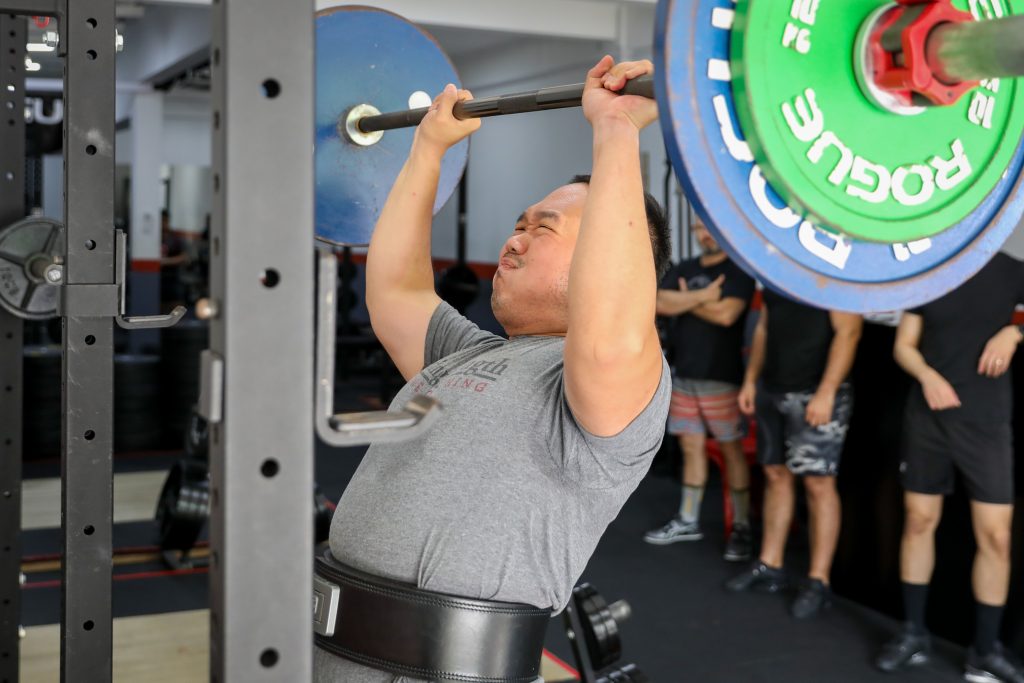
Is your overhead press stuck? Are you frustrated that progress has stalled? Or know that you should be able to press more, but somehow can’t?
There are a lot of factors that dictate how much you can press. While strength is the most important factor (duh!), your efficiency in performing the lift is also an integral part of the question.
Before you even delve into the training program of your press, first start with how you’re pressing. To make sure that you’re pressing as efficiently as possible, pay attention to what happens even before you start to press the bar – that is, how you set your grip.
Wrong grip width is a very common problem
Body proportions vary, so everyone’s ideal press grip width will be different. But chances are, your current grip width is too wide.
When we teach new lifters how to press, our first instruction is, “Grab the bar shoulder-width apart.”
Most of the time, they’ll grab the bar much wider than shoulder-width. We’re not sure if people just over-estimate the width of their shoulders (maybe secretly hoping they’ve got wide shoulders), or they just don’t have a good kinaesthetic sense of their body.
This also happens to experienced lifters. When we get new clients who’ve already been lifting prior to joining us, we tell them to do the press as they usually do while we observe.
The idea is, if their technique just needs small tweaks, we’ll coach them throughout the sets to fix it. But if there are big or fundamental issues, we’ll have to take it from the top and go through the entire press teaching progression. More often than not, these clients also have a press grip that’s also too wide – an issue that needs to be fixed immediately.
Grips that are too wide are mechanically inefficient
So why is too wide a grip a problem? We’ll explain with some basic mechanics.
What we call the “grip width” is the horizontal distance between your hands. The ideal grip width is when your forearms are aligned in a vertical position when viewed from the back or front. At the same time, the barbell should be directly above your elbow joint.
If your grip width is too wide, you’ll have created several moment arms. These moments arms are extra leverage that is unnecessary and requires extra effort to overcome. That effort could be better spent pressing the bar up.
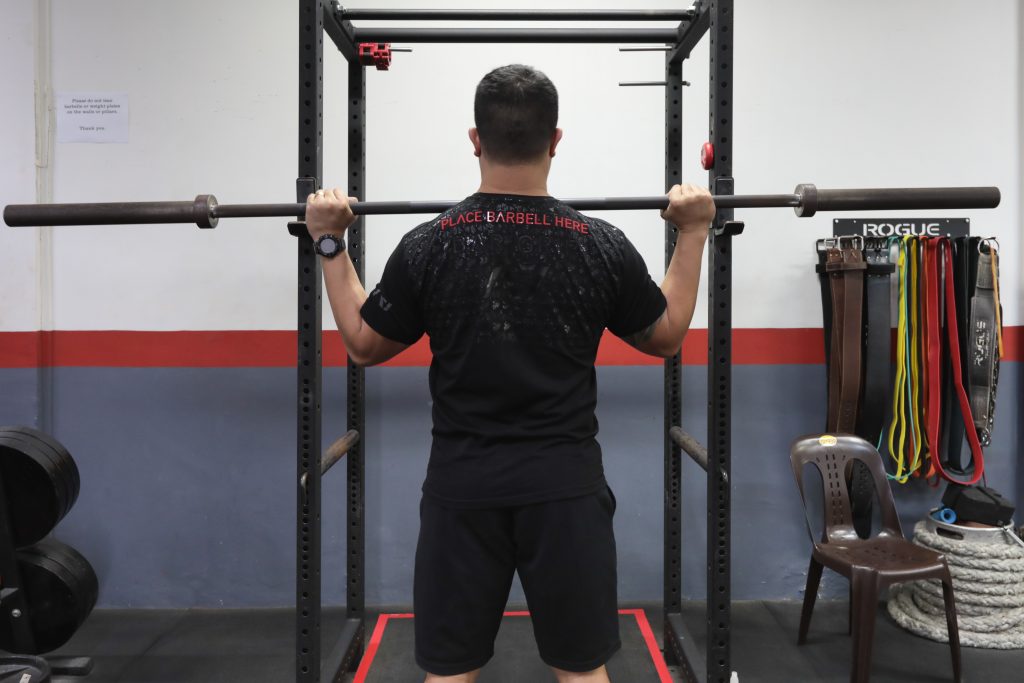
You can see the moment arms between the grip position and the elbows, between the elbows and the shoulders, and between the grip and the shoulders.
So what’s the most efficient grip? In general, you should narrow your grip until your hands are as close to your shoulders as possible, while keeping your forearms vertical and the barbell directly over your elbow joint.
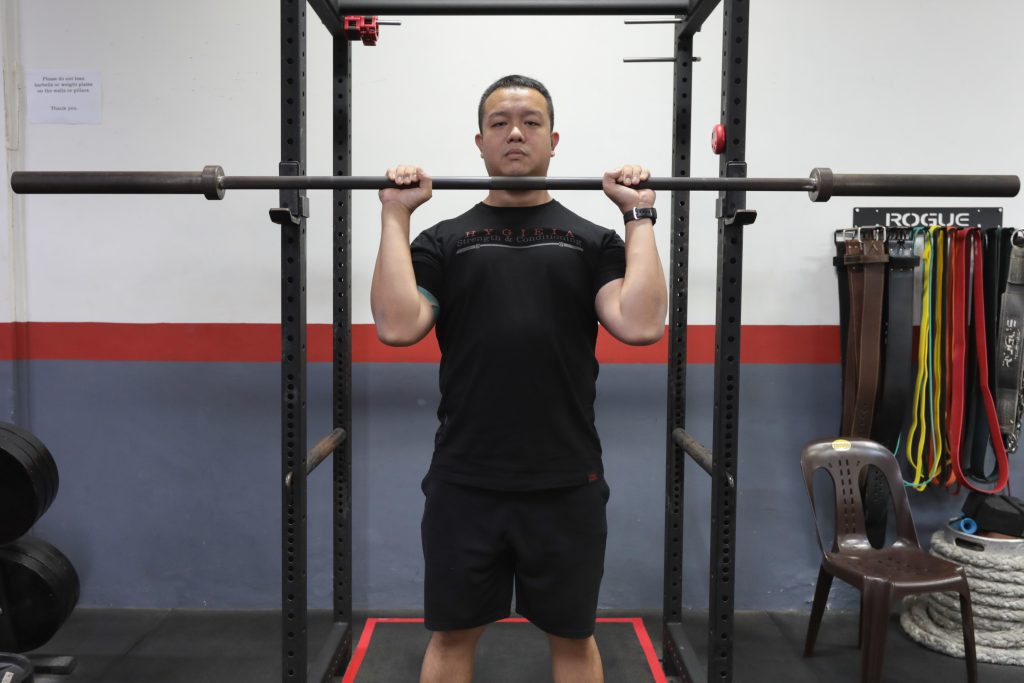
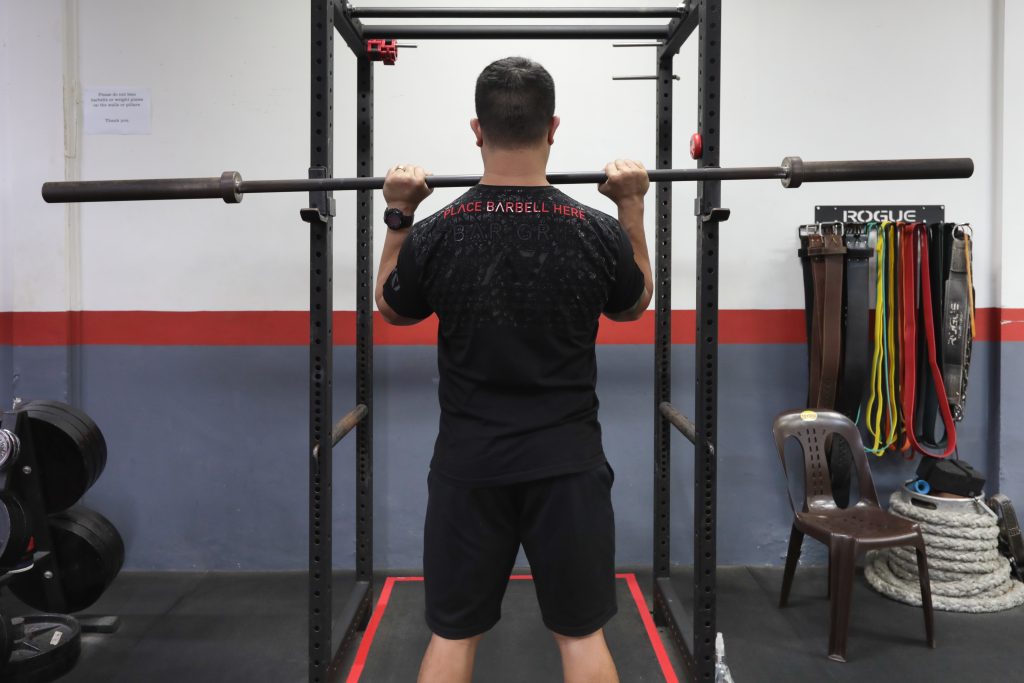
Why can’t I just follow the barbell markings?
Olympic barbells are standardised, with about 42 cm of space between the knurls. So some people will set their grip based on the barbell markings, by measuring off from the knurls.
We don’t recommend this. Because chances are, not every barbell in your gym will be an Olympic-standard barbell. In fact, bog-standard commercial gyms will use cheap barbells, which can have non-standardised markings.
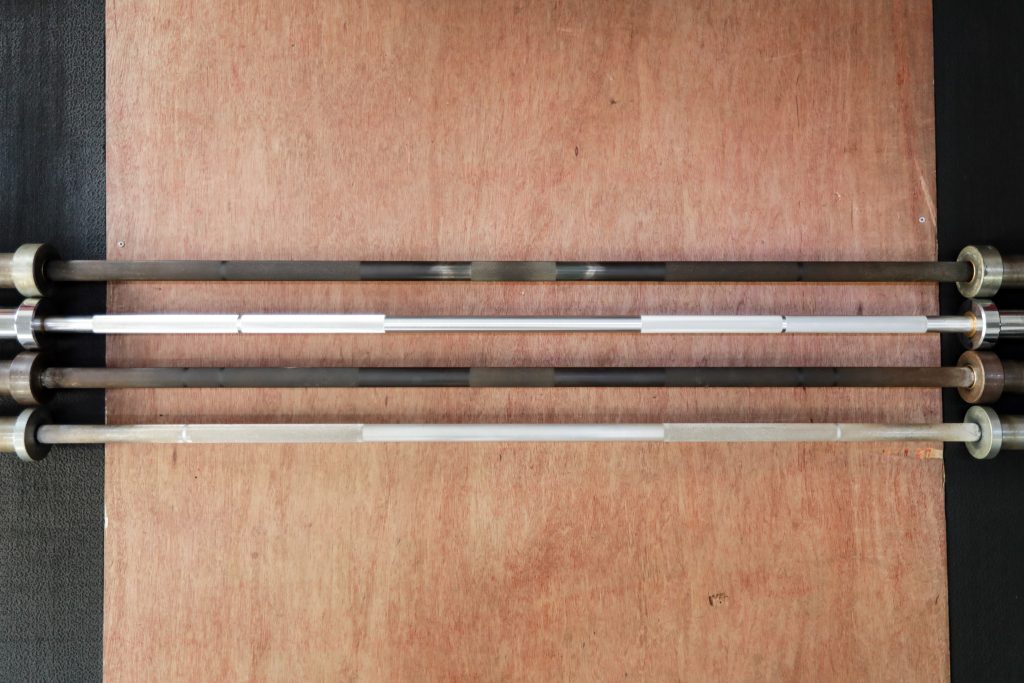
Recently, we reviewed an online client’s deadlift video. Immediately, we spotted a red flag. Her grip seemed narrower than usual, but she was gripping at her usual place on the bar, at the edge where the knurl starts. We asked her to measure the distance between the knurls. It turned out to be narrower than the standard 42 cm.
In general, if you train at a commercial gym, it’s likely that their barbells have non-standardised markings. While some gyms might provide better equipment (due to increasing demand for proper barbell strength training), you just can’t be sure.
Our advice: don’t blindly follow markings. Instead, understand how to set your grip.
How to find your press grip width
Here’s three easy steps to make sure that your press grip is properly set every time.
Step 1: Position yourself – get ready to set up the right grip
Stand in the middle of the bar, at about arm’s length away. Place your hands by your side.
Step 2. Measure the grip – find your shoulder-width distance and how to grip the bar
First, raise your arms straight and forward like a zombie, so that your hands are at the same height as the bar. The bar should already be set on the rack, at about your shoulder height.
Next, open your palms and place your hands on the bar. The bar should sit at the base of your palm. Then rotate your thumbs down and apply some pressure – the bar should settle right into the groove between your thumb and index finger. Once you’ve established this position, start squeezing down from your little finger to your thumb to close the grip.
Step 3. Unrack the bar while keeping the position of wrists and elbows
Walk up to the bar, lower yourself down slightly, then flex and swing your elbows forward so that they are just in front of your grip from viewed from the side
Check if your wrists are neutral – the bar should sit on the heel of your palm. Don’t let your wrists extend or flex. How do you know if your wrists are neutral? Without the bar, make a fist and squeeze hard – that’s a neutral wrist position.
The bar should be directly above your elbow joint. Note that your elbow joint isn’t the pointy tip (where most people think it is). It’s actually slightly further up your arm.
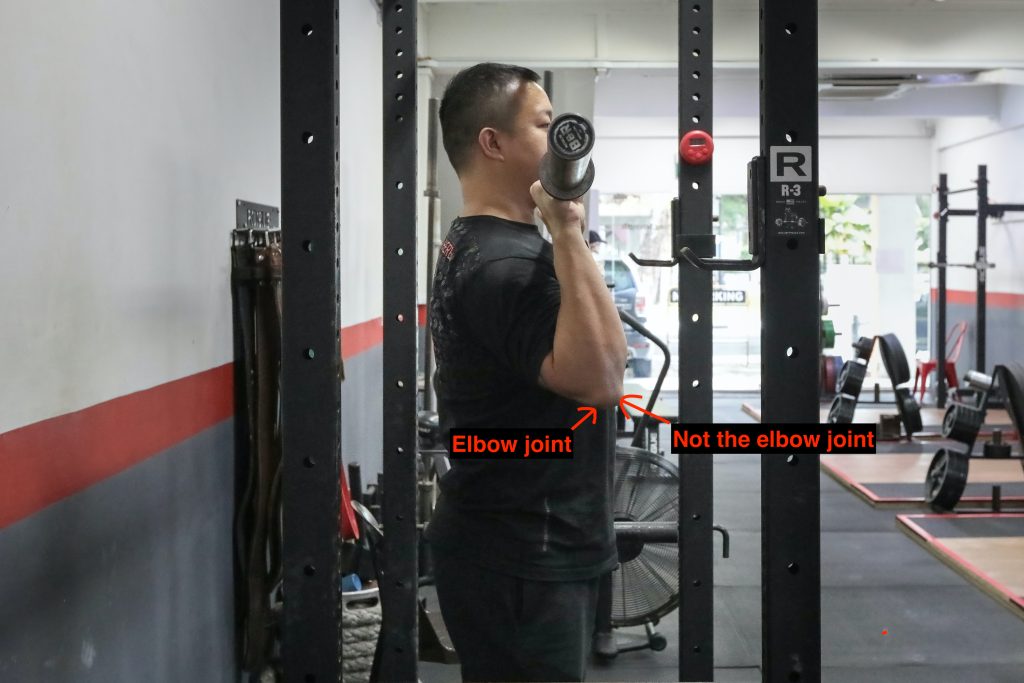
How do you know that your elbows are pointing in the right direction? As a guide, note where your forearm is pointing. Wherever your forearm is pointing is where the bar will go. We want the bar to go up and slightly back so that at the lockout of your press, the bar is directly over your shoulder joint. If your elbow drops too low, your forearms will point forward and away from you. When you start to press, the bar will go forward, which increases the moment arm between the bar and your shoulders in the sagittal plane. Not good.
Now, holding that position, stand up with the bar. Take a step back, and you’re ready to press with the correct grip.
Understanding the how and why
Following the above steps will make your press set up easier and ensure that you’ll always find your correct grip width every time you press.
If you can’t remember everything, here’s a quick mental checklist to cue yourself: get into a zombie shoulder-width position, place the bar in the groove of your palm, grip it tightly with neutral wrists, get under the bar with elbows pointing slightly forward.
By understanding how to find your ideal grip width, you can stop relying on inaccurate markings. Now go forth, grip the bar right, and get those press gains.

